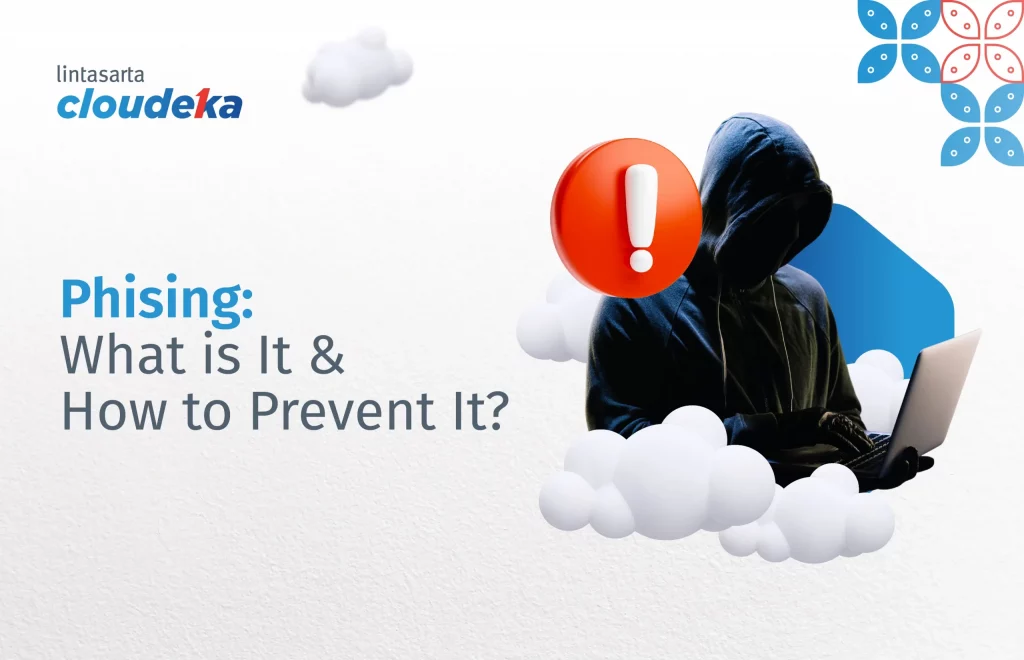What is phishing? Phishing is one of the cybercrimes that often take place in the online world. Usually, the perpetrator will commit his crime by emailing, calling, or sending texts to the target. This will allow the perpetrator to obtain the victim’s data such as credit card or bank details and passwords.
What is Phishing?
Phishing is the kind of cyberattack where the perpetrator will disguise themselves as part of a trusted company or institution to trick the victim. Later the victim will believe and disclose personal information to the perpetrator.
Phishing usually takes place through email. The perpetrator will send a message in various kinds of ways such as telling the victims that they won a prize, or even giving a fake warning that the victims’ account has been hacked. In their message, the perpetrator will include a harmful link or an attachment where the victim will disclose their personal details when clicking the link or attachment.
A phishing-related lawsuit was first filed in 2004. That year, a teenager from California created a clone of the “America Online” website to access credit card details to withdraw the victim’s money.
In Indonesia, phishing is also common and one of which is through messaging applications such as WhatsApp. The perpetrator will spread a phishing link with a notification if a well-known company is distributing its products for free. Victims must click on the phishing link to get the free product.
To avoid phishing, especially through email and chat, there are several ways you can do as follows:
- Pay attention to the grammar and spelling, because mostly the perpetrator is not using the correct grammar and have so many typos in their texts.
- If you receive an email or text message from a well-established brand or company, have a look at the email address or the telephone number. If those companies are truly the sender, they will send those by using an official email with a domain such as rebecca@cloudeka.id, whereas the perpetrator will use the fake email domain such as rebecca@cl0udeka.id.
- In the email or phishing link, the perpetrator will mostly urge the victim to click the link or attachment they provided. They use fear and the curiosity of the victim to have them click on the phishing link.
YOU MIGHT ALSO LIKE:
- The Use of Robotic Process Automation in Human Lives
- What is Big Data: The Importance and Benefit
- What is Cloud and Why is It Important for Business?
How to Prevent Phishing
After you understand phishing, you will also need to read how to prevent it. There are various ways you can do so as not to become a victim of phishing, namely:
1. Do not click random links recklessly
Attachments or links are one of the main issues that can make you a victim of phishing. Refrain yourself from clicking random links or attachments from untrusted sources.
2. Do not share your private information
Phishing targets the personal and private information of its victims for personal gain. To avoid becoming a victim, do not share your personal information on any websites or unknown links. You should also be alert if someone claims to be an employee of a well-known company but asks you to disclose personal data such as the name of your biological mother or your National Identity Number.
3. Pay attention to a website security
A phishing perpetrator often create fake websites. These websites resemble or are almost similar to their original designs. However, there are a few details that distinguish them from the genuine one, and one of them is its security.
Fake websites usually don’t have SSL (Secure Sockets Layer) so they only use HTTP (Hypertext Transfer Protocol). While the official website uses HTTPS (Hypertext Transfer Protocol Secure). This also applies to other websites, such as websites to watch illegal or pirated movies.
Now that you know what phishing is and how to prevent it, you can be more alert and avoid it
